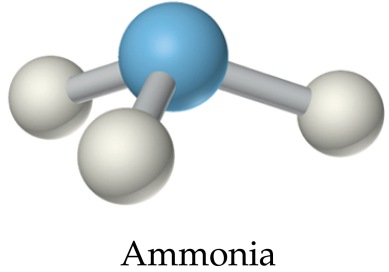Often times, when I understand a basic concept I had struggled to understand for a long time, I wonder, “Why in the world couldn’t someone have just said that?!” A while later, I will then return to a textbook or paper that actually says precisely what I wanted to hear. I will then realize that the concept just wouldn’t “stick” in my head and required some time of personal and thoughtful deliberation. It reminds me of a humorous quote by E. Rutherford:
All of physics is either impossible or trivial. It is impossible until you understand it and then it becomes trivial.
I definitely experienced this when first studying the relationship between broken symmetry and degeneracy. As I usually do on this blog, I hope to illustrate the central points within a pretty rigorous, but mostly picture-based framework.
For the rest of this post, I’m going to follow P. W. Anderson’s article More is Different, where I think these ideas are best addressed without any equations. However, I’ll be adding a few details which I wished I had understood upon my first reading.
If you Google “ammonia molecule” and look at the images, you’ll get something that looks like this:

With the constraint that the nitrogen atom must sit on a line through the center formed by the triangular network of hydrogen atoms, we can approximate the potential to be one-dimensional. The potential along the line going through the center of the hydrogen triangle will look, in some crude approximation, something like this:

Notice that the molecule has inversion (or parity) symmetry about the triangular hydrogen atom network. For non-degenerate wavefunctions, the quantum stationary states must also be parity eigenstates. We expect, therefore, that the stationary states will look something like this for the ground state and first excited state respectively:

Ground State

First Excited State
The tetrahedral (pyramid-shaped) ammonia molecule in the image above is clearly not inversion symmetric, though. What does this mean? Well, it implies that the ammonia molecule in the image above cannot be an energy eigenstate. What has to happen, therefore, is that the ammonia molecule has to oscillate between the two configurations pictured below:

The oscillation between the two states can be thought of as the nitrogen atom tunneling from one valley to the other in the potential energy diagram above. The oscillation occurs about 24 billion times per second or with a frequency of 24 GHz.
To those familiar with quantum mechanics, this is a classic two-state problem and there’s nothing particularly new here. Indeed, the tetrahedral structures can be written as linear combinations of the symmetric and anti-symmetric states as so:
One can see that an oscillation frequency of will result from the interference between the symmetric and anti-symmetric states.
The interest in this problem, though, comes from examining a certain limit. First, consider what happens when one replaces the nitrogen atom with a phosphorus atom (PH3): the oscillation frequency decreases to about 0.14 MHz, about 200,000 times slower than NH3. If one were to do the same replacement with an arsenic atom instead (AsH3), the oscillation frequency slows down to 160 microHz, which is equivalent to about an oscillation every two years!
This slowing down can be simply modeled in the picture above by imagining the raising of the barrier height between the two valleys like so:

In the case of an amino acid or a sugar, which are both known to be chiral, the period of oscillation is thought to be greater than the age of the universe. Basically, the molecules never invert!
So what is happening here? Don’t worry, we aren’t violating any laws of quantum mechanics.
As the barrier height reaches infinity, the states in the well become degenerate. This degeneracy is key, because for degenerate states, the stationary states no longer have to be inversion-symmetric. Graphically, we can illustrate this as so:

Symmetric state,

Anti-symmetric state,
We can now write for the symmetric and anti-symmetric states:
These are now bona-fide stationary states. There is therefore a deep connection between degeneracy and the broken symmetry of a ground state, as this example so elegantly demonstrates.
When there is a degeneracy, the ground state no longer has to obey the symmetry of the Hamiltonian.
Technically, the barrier height never reaches infinity and there is never true degeneracy unless the number of particles in the problem (or the mass of the nitrogen atom) approaches infinity, but let’s leave that story for another day.
really like the quote 🙂
LikeLike
Pingback: Jahn-Teller Distortion and Symmetry Breaking | This Condensed Life
“There is therefore a deep connection between degeneracy and the broken symmetry of a ground state, as this example so elegantly demonstrates.
When there is a degeneracy, the ground state no longer has to obey the symmetry of the Hamiltonian”
Why are these statements restricted only to the ground state of the hamiltonian. Won’t this be true for higher degenerate energy states as well? Is the ground state of any particular significance here apart from being the most probable one?
LikeLike